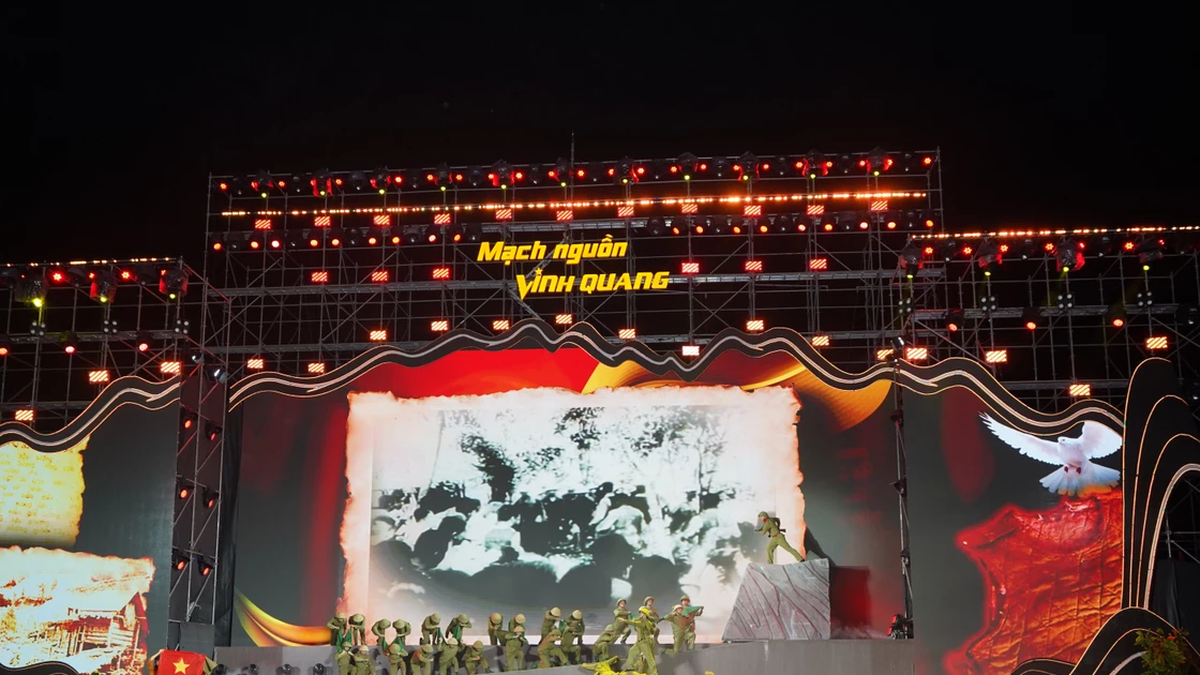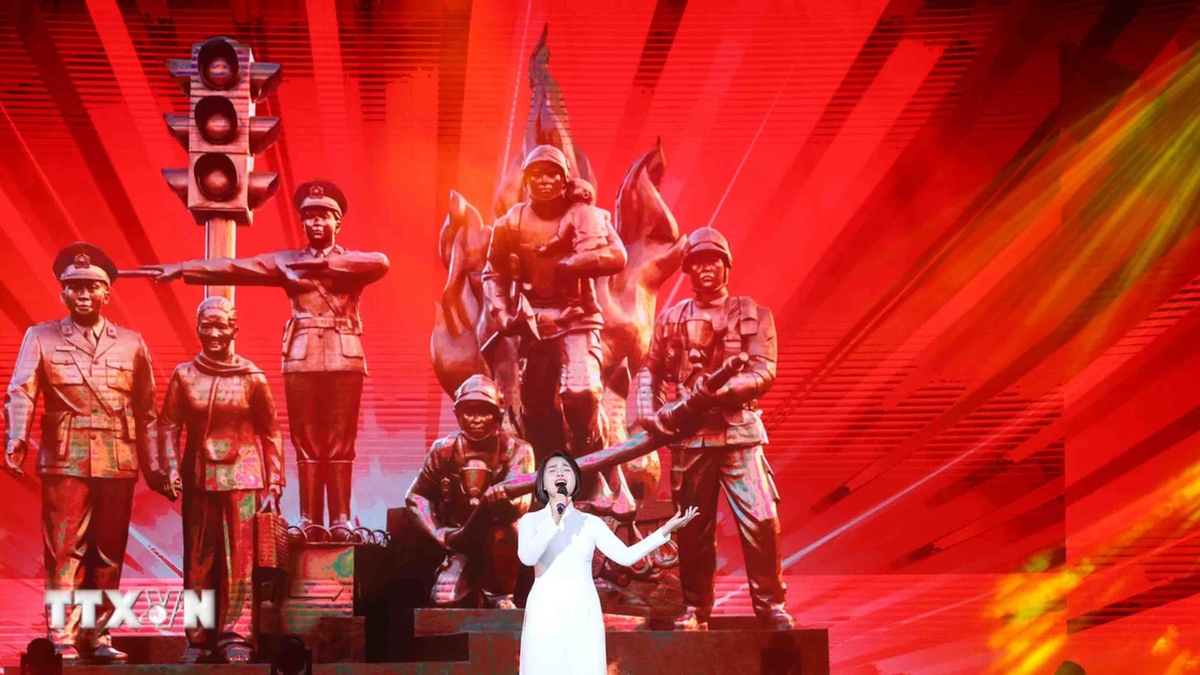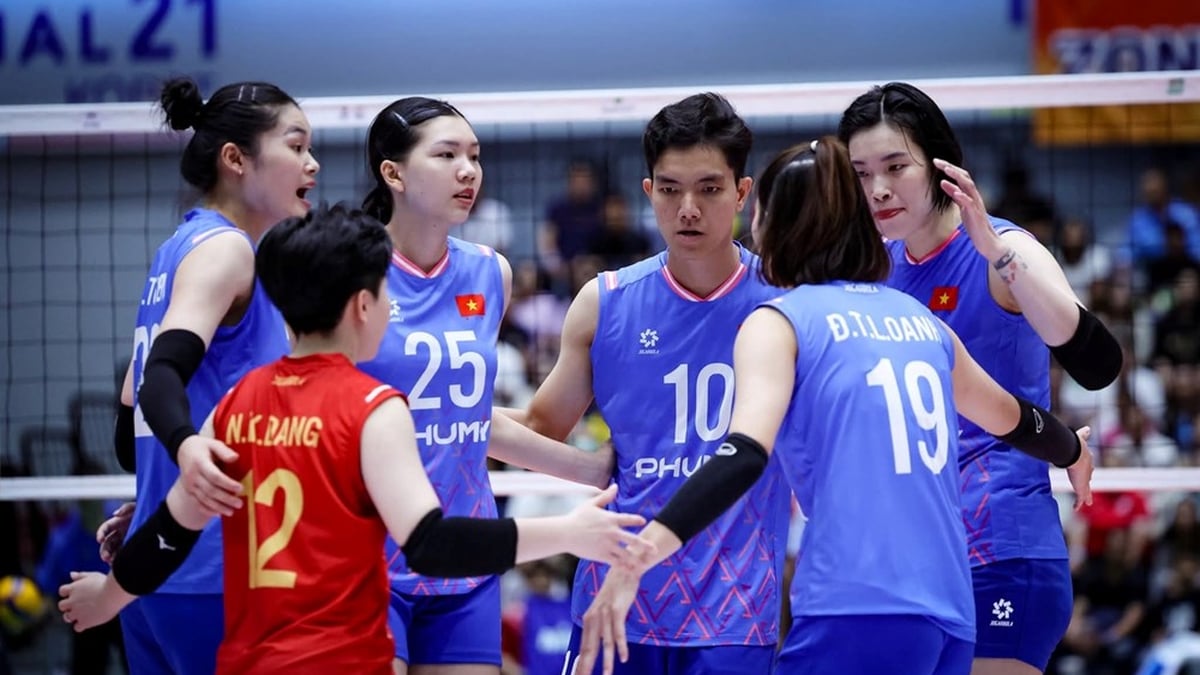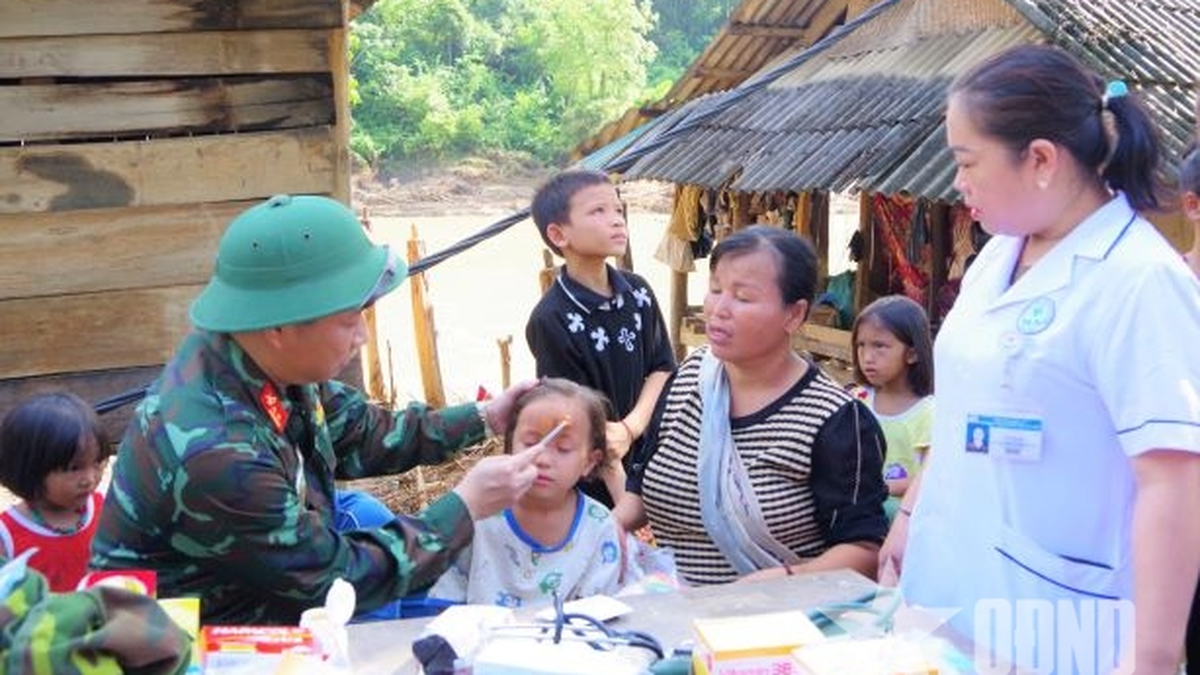Not only are they valuable as sacred objects, but the folk worship paintings of the Dao people in Quang Ninh also contain many unique cultural stories. However, the number of artisans who can still paint worship paintings is very small, and many Dao families no longer maintain the custom of worshiping paintings, pushing this folk painting genre to the brink of extinction.

Dao folk paintings are mostly worship paintings, occupying an important position in the religious life of the Dao people, preserved for many generations. Dao people often use worship paintings in the coming-of-age ceremony, the jumping festival and other important rituals, creating a unique and special cultural feature. In particular, paintings in common activities of the community often have the image of Ban Vuong. This image is the long khuyen, which is a five-colored dog with a dragon's body and 12 tails.
Although the characters are angels, the paintings are not surrealistic but are drawn in the style of folk paintings with realistic strokes. The gods have different facial expressions but all have a majestic look. The main colors in the paintings are blue, red, purple, yellow, white, which are concretized in every detail.
Besides the religious value, worship paintings also have educational value, containing a huge amount of folk knowledge. The paintings contain the concept of the Dao people since the beginning of time, associated with the history of their origins, as well as the relationships between humans and the universe, gods and aspirations in life. Accordingly, there are 3 gods with unparalleled power, protecting human life: Ngoc Thanh (god of heaven), Thuong Thanh (god of earth), Thai Thanh (god of the underworld).
Paintings are family heirlooms, so the Dao people do not hang them every day in their homes, only when performing rituals. The Dao people believe that worship paintings represent sacredness and are related to the safety of the family and clan. Therefore, they perform rituals and keep the paintings very carefully. The paintings of the shaman are shared by the whole community. During the initiation ceremony, people hang many sets of worship paintings brought by the shamans.
Sometimes a set of paintings is decades old, even hundreds of years old. A set of worship paintings includes many different paintings and is painted with great care, from making the drawing paper to choosing the ink. According to artisan Hoang Van Tai, in Dong Hai commune (Tien Yen district), the most popular set of paintings is 12 paintings, the least is 3 paintings, and when purchased, a very complicated worship ceremony is performed, so families and clans consider them as family treasures.

The difficulty for the artist is to arrange a dense layout of divine characters in a narrow and long area. These are the Jade Emperor, the Supreme Elder Lord, the Jade Purity, the Supreme Purity, the Holy Lord, the Opening of Heaven, the Opening of Earth, the Thunder God, the La Sat, along with the mortal world, gods, Buddha, ghosts and hell... The painting has up to 120 divine characters. These characters follow a social rule, the character with great power is drawn large, occupying the central position, while the gods with less power are drawn simply, in small size. In addition, there are elephants, horses, flags, parasols, and attendants.
Another talent of the artist is that in the same painting, he can express many different layers of space, time, reality and fantasy, main gods, secondary gods, demons and humans. In particular, there are worship paintings depicting all kinds of scenes, from the ground to the sky, from mountains and rivers to the sea, from hell to paradise, depending on the rich imagination of the folk artist.
In the past, the Dao people made their own do paper to make painting paper, but now it is more convenient because it is available on the market. The artisans will use sticky rice, chopped buffalo skin and a few slices of forest trees, put them in a pot and boil them over low heat for about 2 days and 2 nights to create an adhesive. Then, they spread the do paper out and apply glue to each sheet. Like that, about 10 to 15 sheets of do paper are stuck together to create a thick sheet of paper and then hung in a ventilated place to let the adhesive layer dry slowly.
Because of the elaborateness, it usually takes several months to a year to complete a set of paintings. And of course, the price of each set of worship paintings is up to tens of millions of dong. Not every family can afford to buy them. This is also one of the reasons why the number of worship paintings is not much anymore. The demand is less, so the number of artisans can be counted on the fingers. Another worrying thing is that many families have completely lost the custom of worshiping paintings. Therefore, it is thought that the collection and preservation of worship paintings of the Dao people in particular, and folk paintings in Quang Ninh in general, need more attention.
Source


































































































Comment (0)